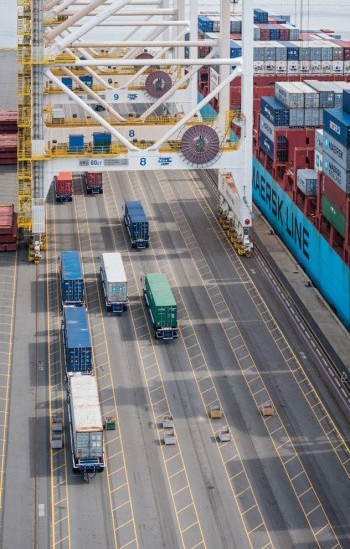
Retirements will leave B.C.’s Asia Pacific Gateway project 110,000 workers short
by The Canadian Press

According to a new study, the infrastructure initiative, designed to keep trade between Canada and Asia flowing, will run short on skilled workers

The Asia-Pacific Gateway and Corridor Initiative aims to ensure the Canadian infrastructure is in place to support trade with Asia. PHOTO: Port Metro Vancouver
VANCOUVER—A new study shows British Columbia will require thousands of skilled workers over the next decade, just to maintain the needs of the Asia-Pacific Gateway and Corridor Initiative.
According to the study, nearly 110,000 jobs will open up in 52 transportation and construction occupations across the province by 2025, including management and regular positions in the construction, logistics, marine, rail and trucking sectors.
Findings of the Asia-Pacific Gateway Skills Table study show retiring workers are the main reason for the vacancies, but continued expansion of the corridor also plays a role.
The report warns Lower Mainland and northern B.C. employers to expect difficulties filling job openings, but the challenge will be especially pronounced between 2019 and 2023.
The initiative is a non-profit, regional partnership between labour, business, education and training institutions, with a goal of ensuring the Asia-Pacific Gateway has the right workers at the right time.
The federal government’s website says the Asia-Pacific Gateway and Corridor was created as the best transportation network for trade between North America and Asia and is a growing and vital part of the national economy.
“The Asia-Pacific Gateway continues to be an economic driver for (British Columbia) and part of our ability to capitalize on this opportunity is to have the labour in place to support it,” says Krista Bax, executive director.
According to the study, just over half of the required new supply of workers in the next decade will be straight out of school and new to the workforce, while immigrants from other provinces or countries will make up 21 per cent.